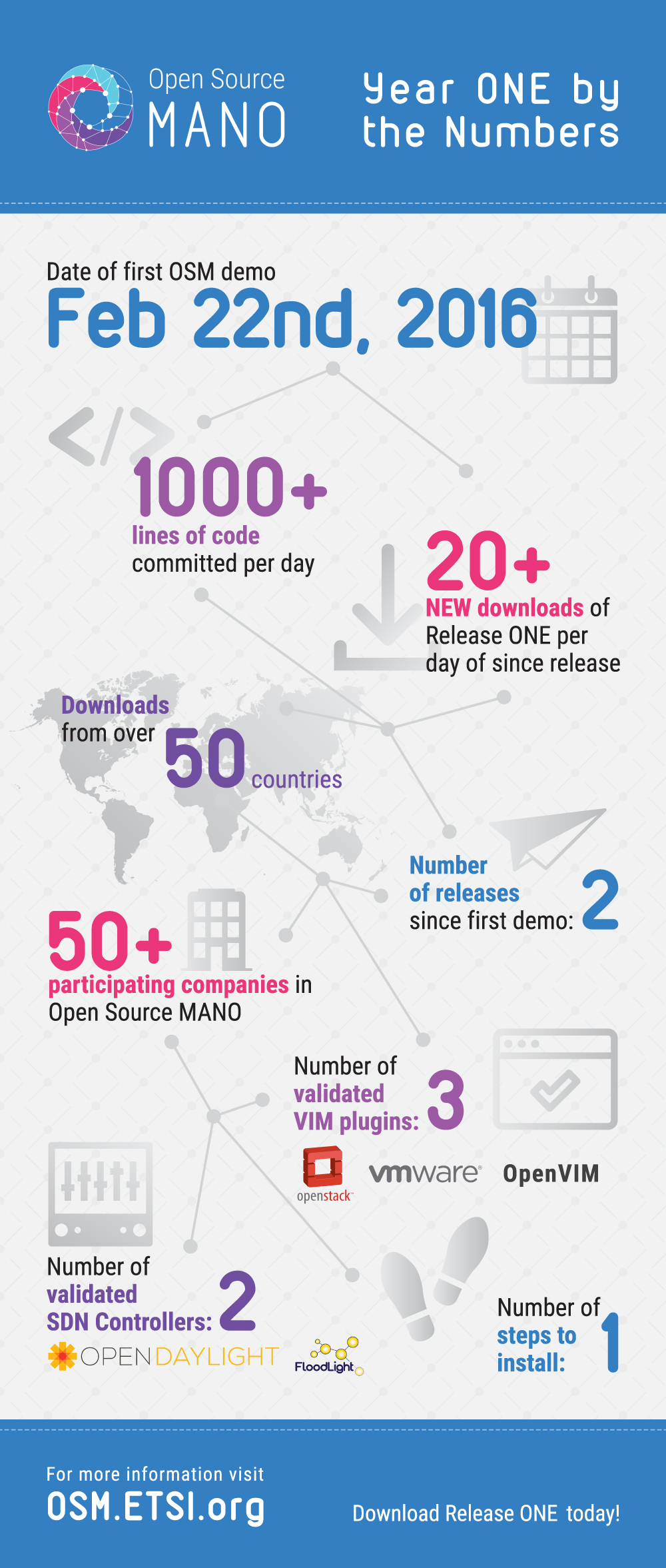Year 1: OSM races out of the starting gates to shape global MANO ecosystem

January 2017
Written by Chris Buerger, Intel, Chair OSM Marcom Task Force
Speed matters. In software development, no matter whether it is proprietary or open source, early success is often defined in the same way as an Olympic 100-meter dash. The first few steps out of the starting block are critical in quickly getting to the 100m point. The race then changes once this has been accomplished – the straight line race track starts to curve and a group of runners settles in to run the distance and find success at the finish line.
To me, the first year of OSM bears a number of similarities to a 100-meter race, and as the year 2017 has just started, I am taking some time to reflect on what we have jointly accomplished since the inception of the OSM community and outline a number of personal thoughts on key themes for this new year.
Not to wax nostalgic, but looking back at 2016 does showcase a number of accomplishments that would be the envy of the majority of open source communities. From the first public OSM demonstration at the end of February at MWC 2016, to creating two OSM releases that have been downloaded more than 2000 times from 50+ countries, to capturing the interest of 55 organizations that have joined OSM, we have much to be proud of. On the technical side, the creation of a well-functioning, one-step installable, multi-VIM, multi-SDN controller OSM Release ONE that incorporates information models commonly agreed upon by a group of operators and solution vendors stands out to me. On the community engagement side, the OSM workshop at SDN World Congress in The Hague, the launch of the new website, quarterly newsletters, the OSM Twitter channel and, personally most important, the contributions of an awesome group of marketing professionals to create awareness and excitement for OSM top my list.
Year 2 will be different. Speed still matters, but it will be accompanied by well-measured collaboration activities to take the OSM software stack through the standard lab/field/production deployment cycle with service providers engaging in MANO. Interoperability, stability, security and the size and maturity of the commercial support ecosystem for OSM will become key themes on the road to production deployments. New use cases and network service scenarios from the broader community will tie the code base to its economic value. I expect that OSM’s guiding principle of modularity for any software component will provide additional choice and capabilities.
In addition, as a result of the success of broadly observed initiatives such as Telefonica’s UNICA program, a set of existing and new community members will choose to actively invest time and contribute engineering expertise and code as purchase points for OSM proliferate across the globe. ETSI’s groups for NFV and MANO will receive an increasing amount of input based on the pragmatic results of the work within OSM.
So speed and timing will still matter as OSM turns its sights from a 100-meter dash to a 10k race in 2017. I believe that as with other successful software development initiatives, collaborative and reliable execution and a singular focus on unlocking OSM’s economic value for the entire community over the next 5-10 years will set us apart. OSM’s accomplishment in getting out of the starting block with speed and clear direction is the best indicator for continued success in 2017 and beyond.

